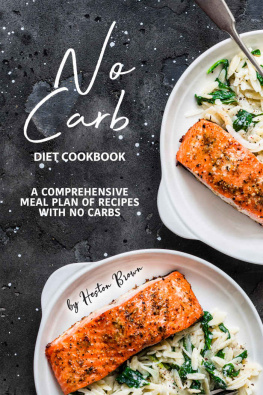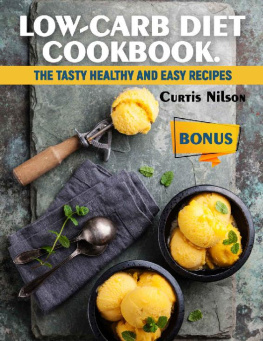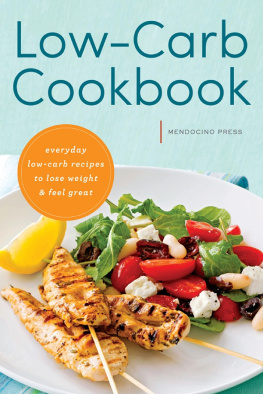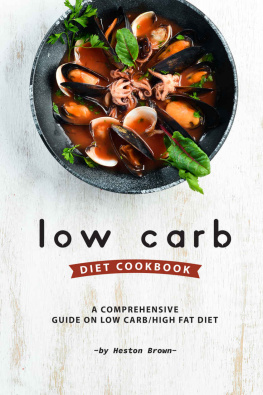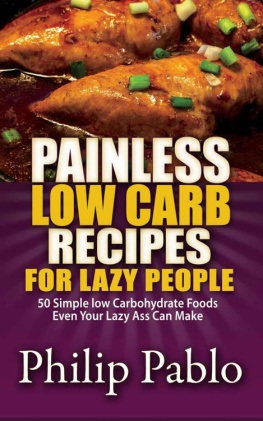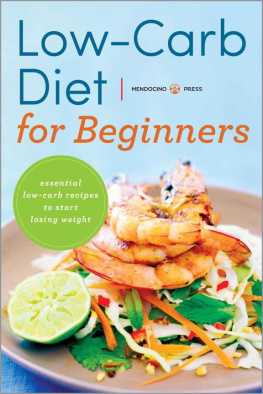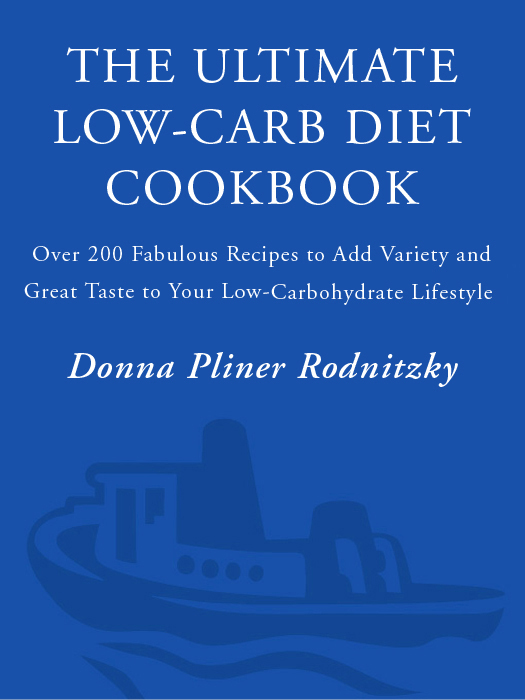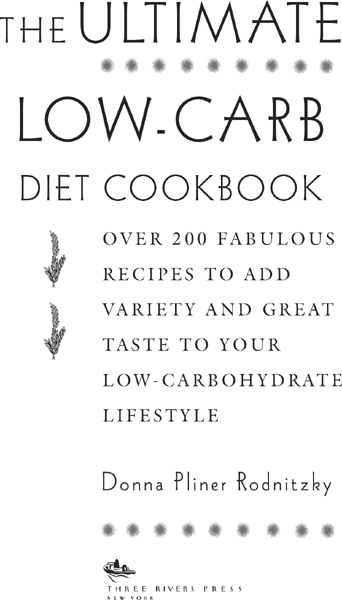CONTENTS

ACKNOWLEDGMENTS
I would like to thank Alice Feinstein, editorial director, for putting her trust in me to write a cookbook that would meet the high standards of Prima Publishing. I also would like to thank my project editor, Michelle McCormack, who not only is wonderful to work with but whose attention to detail and insightful suggestions have once again proven invaluable to me. Thanks to Susan Sugnet, cover designer; and the entire staff at Prima Publishing for their excellent professionalism in bringing this book to publication.
I would especially like to dedicate this book to my husband, Bob. No cookbook of mine would be complete without his constant support, constructive critiques, and his input of innovative ideas; and to my children, David, Adam, and Laura, whose accomplishments continue to be a source of tremendous pride for me.
Special thanks go to many of my friends who enthusiastically shared some of their favorite recipes with me. They are Connie Brothers, Ellie Densen, Sonia Ettinger, Shula Lavie, Joanne Madsen, Katherine Moyers, Judy Neiman, Rosemary Plapp, Susan and Michael Wall, Anita Weiss, and Jo Gail Wenzel.
INTRODUCTION
In the 1970s, Dr. Robert C. Atkins book, Dr. Atkins Diet Revolution, revolutionized the way millions of people dieted. Instead of encouraging readers to restrict the amount of fat in their diets, as most other diet experts stressed at that time, Dr. Atkins emphasized reducing the daily intake of refined carbohydrates. He was convinced that carbohydrates were the main culprits leading to weight gain. He reasoned that a diet consisting of sweet foods rich in sugar, or starch-containing foods such as grains, cereals, pasta, and potatoes, causes an increase in the production of insulin, and when there is excessive insulin in our bloodstream, the food we eat is quickly converted into fat.
Just as important, he noted that high-carbohydrate meals leave people feeling unsatisfied and constantly seeking additional ways to curb their hunger. Dr. Atkins acclaimed theory proposed that by adhering to a low-carbohydrate diet, the resulting decrease in insulin production could reduce conversion to fat and quell the constant sense of hunger, making it easier to lose weight, even when eating a diet that does not strictly limit fats.
Since the introduction of Dr. Atkins book, several other authors have published books with diet plans focusing on the low-carbohydrate diet. Each emphasizes the need to restrict carbohydrates in the diet, but offers a slight variation on the original Dr. Atkins diet. In , I provide an overview of several of these diets to allow you to compare the merits of each individual plan and evaluate which one might be best suited to your lifestyle.
With so many millions of people who are enthusiastic about this approach to dieting, I was delighted to have the opportunity to write The Ultimate Low-Carb Diet Cookbook. This collection of more than 200 exciting recipes is designed to appeal to everyone who has made the commitment to reduce the amount of carbohydrates in their diet as a means of losing weight and maintaining a healthier lifestyle.
The Ultimate Low-Carb Diet Cookbook begins with a discussion, in simple terms, of the nature of carbohydrates and their metabolism in order to help you understand the philosophy and science behind the low-carbohydrate approach to dieting. For some of you who are already following this approach, it may not be entirely new information. For those who have been curious about the diet or are contemplating trying it, however, my goal is to present enough basic information to allow you to understand the underlying principles of this approach, and to feel confident about diving in. Readers who desire more than a basic understanding of these nutritional concepts may wish to seek a more definitive scientific description of the low-carbohydrate diet provided in publications by one of the many health professionals with special expertise in human nutrition.
After the discussion of the principles of the low-carbohydrate diet, the remainder of the book features more than 200 recipes that put this philosophy into practice. I hope you will not only savor these recipes, but also use them as an inspiration to create your own low-carbohydrate masterpieces.
, the first recipe chapter, Appetizer Excitement, provides a host of flavorful temptations to share with friends or family. Although snacking should be kept to a minimum while on this diet, there may be times during the day when you need a quick bite to get you to the next meal. It is also great to enjoy a tidbit or two while sharing in good conversation, enjoying television, or watching a movie. So start off the evening with Mushrooms Stuffed with Italian Sausage, Creamy Herb Dip, or Smoked Salmon Mousseyou wont ever be tempted to serve potato chips again.
In , Startling Soups, you will find a wide variety of delicious, satisfying, and healthy low-carbohydrate soups. I personally find that nothing satisfies my appetite faster than a bowl of soup before a meal. While most soups have the added benefit of being warming on a cold, blustery day, the recent popularity of cold soups has introduced a refreshing way to cool down on a hot, sultry day. All of the soups in this book are made with low-carbohydrate ingredients, and you will be both delighted and surprised at the number of ways ordinary ingredients such as zucchini can be transformed into a zestful and creamy textured soup. If you only have time at lunch for a quick bowl of soup, you will be impressed with Curried Cauliflower Soup or Savory Zucchini Soup, both richly flavored and satisfying. When friends are over for a barbecue, serve mugs of Spicy Roasted Red Pepper Soup as you relax on the patio. Let your mantra be Soups on.
If you are a salad lover, then look no further than my chapter Savvy Salads, containing over 25 recipes for you to enjoy. Salads have been an essential component of a good meal for centuries, but in recent years they have evolved from a simple bowl of greens into a cornucopia of tastes, textures, and colors. With so many fresh salad ingredients now readily available year round in your local supermarket, a modern salad can brim with a surprising variety of novel greens adorned with an enticing array of traditional and exotic vegetables harvested all over the world. With the sprinkling of a zesty vinaigrette, these garden masterpieces can effortlessly be elevated to gourmet heights.
Not only do salads provide a delicious and healthy way of dining, they are also truly satisfying to both the palate and the eye. Just as impressive, with the addition of poultry, meat, seafood, eggs, or cheese, these salads can easily be transformed into main course fare. For example, by adding leftover meats, such as Southwestern Rubbed Flank Steak, to spinach and other salad ingredients, you can create a Savory Spinach Salad with Steak and Blue Cheese, an exceptionally delicious and satisfying main course. Leftover chicken or turkey can be used to create a Cobb salad, or by adding last nights ham, a hearty Chefs Salad can suddenly appear. Whether you only prepare the salad recipes provided in this book or use them as an inspiration for creations of your own, you will discover that salads provide the ultimate opportunity to creatively incorporate healthy, low-carbohydrate foods that complement each other in taste, color, and texture.


